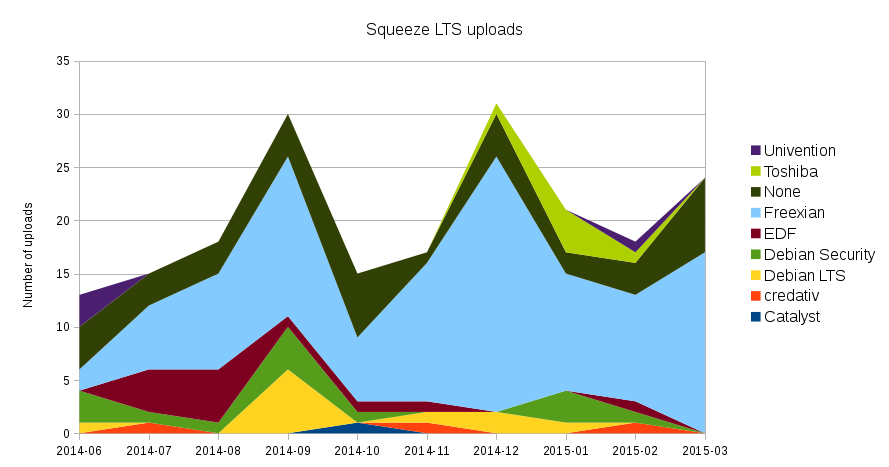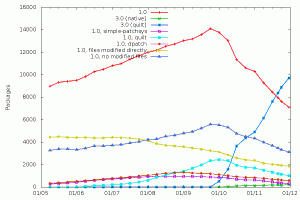On Sunday I gave a talk about Debian LTS during the Mini-DebConf in Lyon. Obviously I presented the project and the way it’s organized, but I also took the opportunity to compute some statistics.
You can watch the presentation (thanks to the video team!) or have a look at the slides to learn more.
Here are some extracts of the statistics I collected:
The number of the uploads per “affiliation” (known affiliations are recorded in the LTS/Team wiki page) is displayed on the graph below. “None” corresponds to packages maintainers taking care of their own packages, “Debian Security” corresponds to members of the security team who also contributed to LTS, “Debian LTS” corresponds to individual members of the LTS team without any explicit affiliation. “Freexian” represents in fact 29 financial sponsors (see detail here).
Top 12 contributors (in number of uploads):
- Thorsten Alteholz: 66
- Holger Levsen: 27
- Raphaël Hertzog: 14
- Raphaël Geissert: 13
- Thijs Kinkhorst: 8
- Kurt Roeck: 7
- Christoph Biedl: 7
- Nguyen Cong: 6
- Ben Hutchings: 6
- Michael Vogt: 5
- Moritz Mühlenhoff: 4
- Matt Palmer: 4
The talk also contains explanations about the current funding setup. Hopefully this clears things up for people who were still wondering how the LTS project is working.



 I launched
I launched